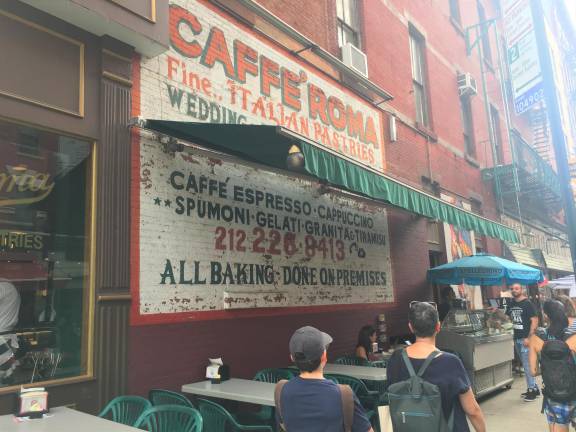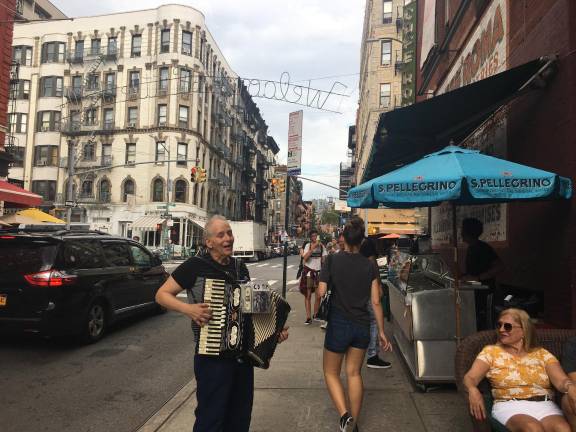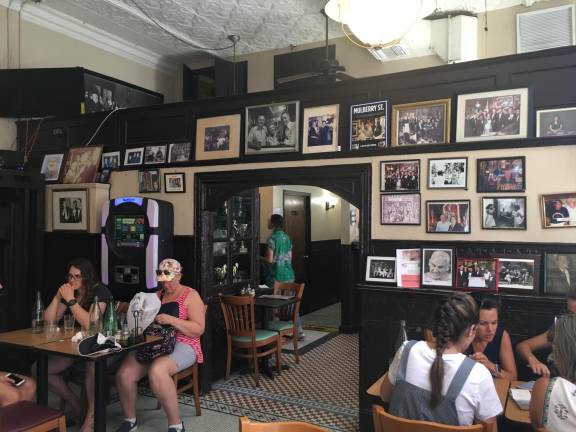Little Italy: ‘Three blocks strong’
Although the neighborhood has endured many changes over the years, restaurant owners insist that they’re still here and thriving



To many New Yorkers, Little Italy is not a regular go-to spot to grab a meal and spend an evening. Some city residents never take the trip to Mulberry Street, other than to entertain visiting family and friends who hope to reenact scenes from “The Godfather.”
While many original establishments, such as Luna Restaurant, have remained open, many others have had to close their doors over the years. Popping up in their place: souvenir shops.
“It’s a tourist destination completely,” said Doreen Donofrio, who grew up in the neighborhood in the 1960’s and 70’s. She is now the manager of Luna, which her great grandparents opened in 1912 after immigrating from Naples. “The neighborhood has changed dramatically. We were a community. We were three, four, five generations. Everyone knew each other. And it wasn't all this commercialized stuff. We had bakeries, a funeral home, a dry cleaner ... It was just one big family.”
Longtime residents point to extreme rent increases, on both commercial and residential properties, as a major reason why their community, which was once heavily Italian-American, has dwindled. Additionally, the small size of the typical apartments, tenements that were once home to immigrant families striving to achieve the American Dream, have led families to leave the neighborhood in search of more space.
Frozen in Time
In spite of these changes, aspects of the old Little Italy remain.
Walking into the Mulberry Street Bar is like stepping into a time machine. The bar, which opened in 1908, has been the location for many famous movies and television shows, including “The Sopranos” and “The Godfather III.” An episode of “Blue Bloods” was shot there just a couple weeks ago.
“Everything here is from 1908, including the bartender,” joked Mulberry Street Bar owner Vivian Catenaccio. “The floor is the original floor. The bar is the original bar.” Although she acknowledged the many changes in the neighborhood, Catenaccio said Little Italy continues to be a vibrant community and major destination for locals and tourists alike.
Supporting the Community
“We’re still here and thriving,” Catenaccio said. “We have millions of people that come through here, tourists and otherwise. It’s very safe, very festive and still very popular.”
Catenaccio largely attributes this success to the strength of the Little Italy Merchants Association (LIMA), which has worked to support dozens of Little Italy establishments, including restaurants, specialty shops and Italian delis, for over 30 years.
The president of LIMA, Willie Dominguez, hails from Mexico. He moved to the neighborhood in 1992 and began working as a busboy in restaurants, including Luna Restaurant, which he now owns. When asked why he decided to settle down in Little Italy after coming to the United States, Dominguez’s answer was simple: “I love Italian food.”
‘What a Neighborhood is About’
“We here at LIMA are the future of the neighborhood,” Catenaccio said.
One hope for that future, shared by many residents and merchants, is for city officials to do more to support historic Little Italy establishments, such as Caffe Roma, which has been run by the same family since it opened in 1891 and is famous for its classic Italian pastries.
“This is a neighborhood that’s basically a very, very lucrative business for the city,” said Vincent “Buddy” Zeccardi, the current owner of Caffe Roma. “They don’t give us any incentive ... You see a city official walk the street, you know they're looking for something. They're looking to take something away from you ... The politicians really don't have any insight into what a neighborhood is about.”
The area has welcomed many visitors this summer for the Little Italy Pedestrian Mall – throughout the summer, Mulberry Street is closed to traffic on weekends, allowing pedestrians to peacefully stroll through the neighborhood. (The pedestrian mall ends September 8.) Although most Italian-American families have left the neighborhood, many will return to attend the Feast of San Gennaro next month.
“We will do everything possible to keep our community intact,” Catenaccio said. “We’re three blocks, but we're three blocks strong.”